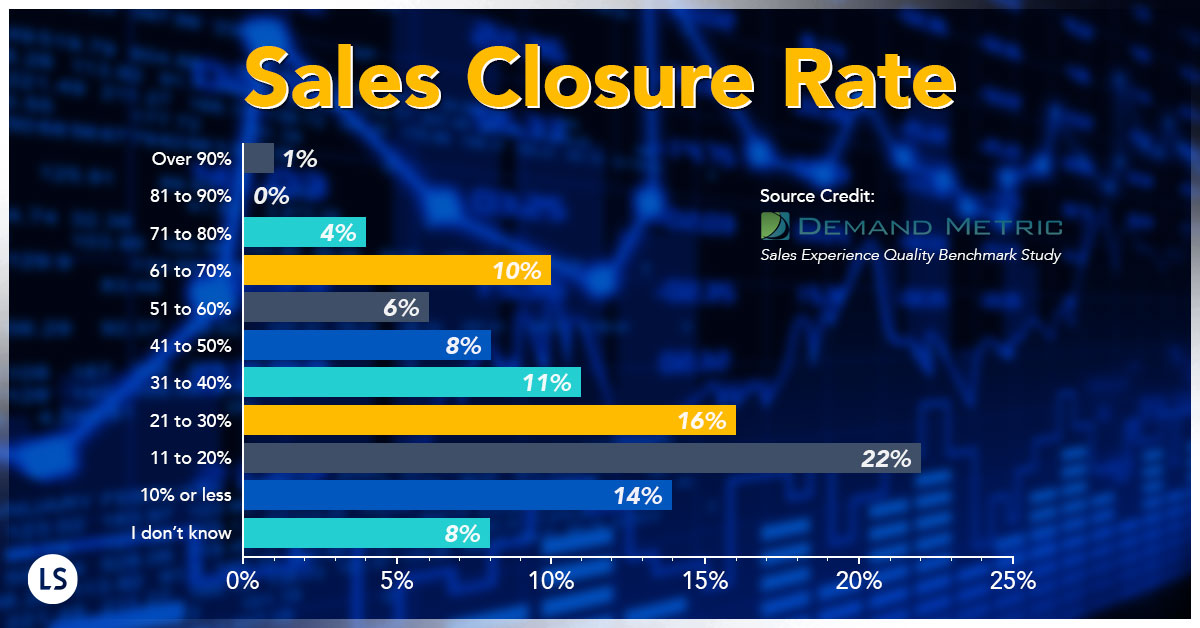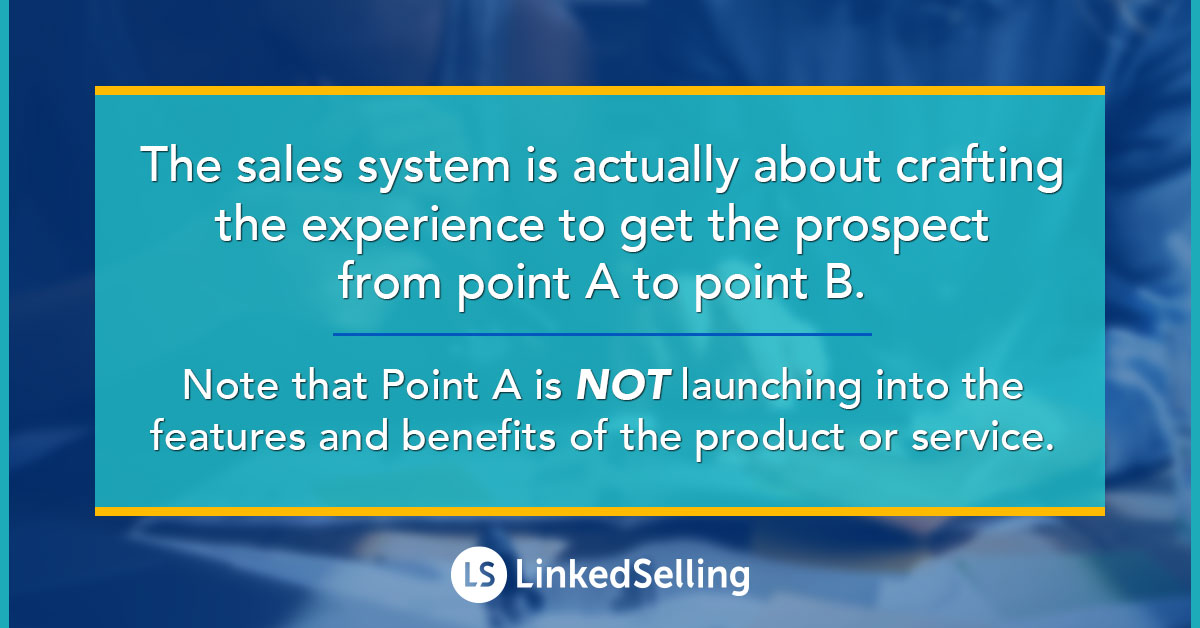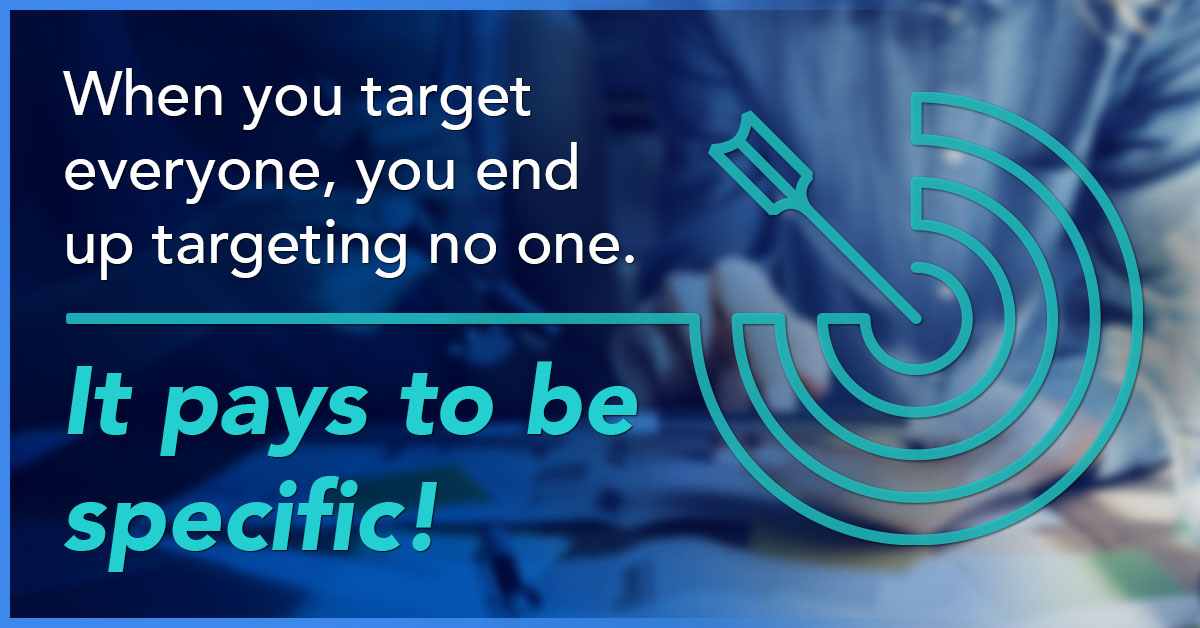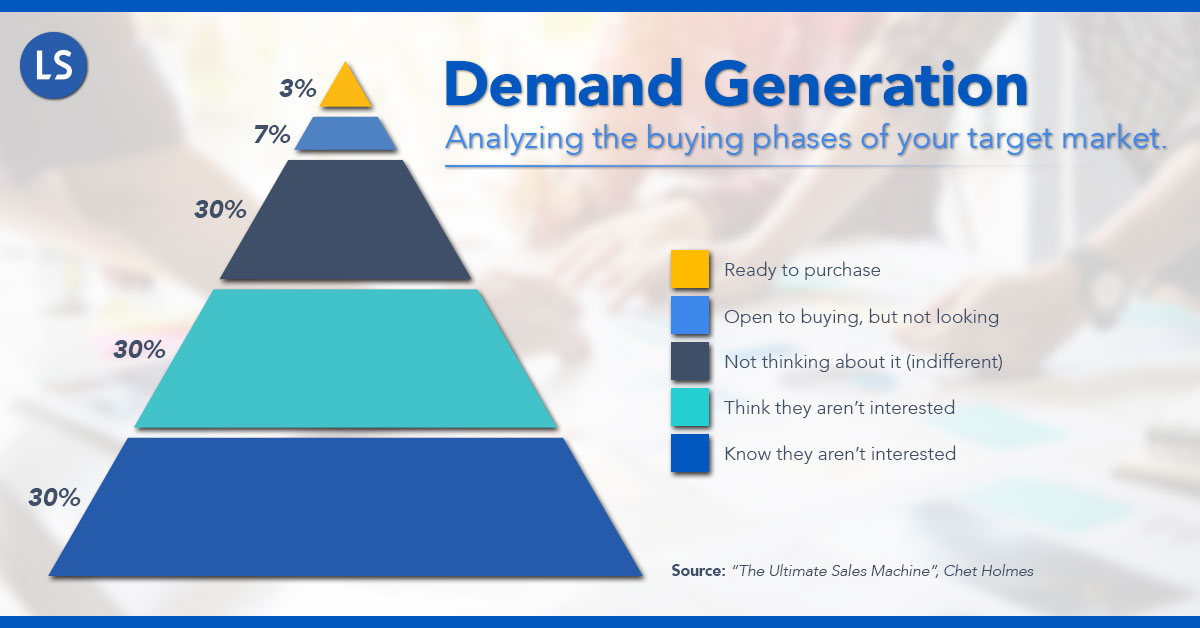Posted by LinkedSelling in B2B Lead Generation & Sales Development

As an outbound lead generation and sales development agency, we fill your sales teams’ calendar by delivering quality sales opportunities consistently.
We keep your sales pipeline full.
This is a huge benefit for our clients because they can focus on closing and they’ve got consistent sales opportunities coming in the door. Once we deliver the sales appointment, converting these prospects into leads is now in the hands of the client. But what happens when the client doesn’t close the deal and convert these prospects into new clients of their own?
This blog post will address a few reasons that a client might fail with the sales appointments we deliver based on what we’ve observed from working with hundreds of businesses and delivering hundreds of thousands of quality sales appointments.
Industry Standards: Why Quality B2B Sales Appointments Might Not Convert
Before we get into our own observations from working and speaking with clients, it’s useful to see what’s going on in the B2B sector as a whole.
How many appointments close and average and what are the most common reasons sales teams don’t close the deal?
MarketingProfs did a run down of several recent studies and summarized that “most B2B marketing and sales professionals (60%) say price is the top reason Sales doesn't close qualified leads.”
This data was from a recent report from Demand Metric and Showpad.
The same study also showed other frequently cited reasons for failing to close qualified sales opportunities include:
- failure of the sales team to perform (35% of survey respondents)
- lack of a compelling product or service (31%)
- difficult business terms or conditions (21%)
- and failure of the marketing team to perform (18%)
This data comes from a survey of 182 marketers, sales professionals, and C-suite leaders.

Another important set of data shows how often sales teams are actually closing quality sales opportunities to begin with. The numbers might be surprising:
“Sales professionals say they "strike out" around 70-80% of the time they engage with a qualified prospect (the median sales closure rate of respondents is between 21% and 30%).” - MarketingProfs

Inside Analysis: Why Quality B2B Sales Appointments Might Not Convert
Now that we’ve looked at what’s going on for the B2B industry as whole, we can understand that not every appointment will convert a prospect into a new client - AND that there are several common reasons businesses have identified that could be bottlenecks in the closing process.
Next, let’s turn to our own experience. Our own Director of Agency came up with a list of ALL of our past and current clients listing out the top reasons the qualified sales appointments we’ve generated for them never converted. The reasons might surprise you.
Here is a run down of items that we’ve seen make a difference for our clients in whether or not they close the qualified appointments we deliver to them. The items on this list are based off of hundreds of conversations with clients and businesses about their results in managing and trying to prospects into clients.
Thrive Leads Shortcode could not be rendered, please check it in Thrive Leads Section!
1. No sales system to handle incoming leads
Without a sales system to handle incoming leads, we’ve seen that sales teams struggle to not only keep things organized but to connect with the prospect. A system provides structure, accurate data and reporting, as well as up-to-date information about the prospect. Trying to jump into a sales conversation without a system is like trying to fly a plane without a route planned out.
Let’s pause for a second to look at this from another angle as well: what’s the difference between a sales system and a sales methodology? The two are intricately related but they are different parts of what it takes to close a client. First, consider a sales system the process and the methodology and the artistry of handling a sales call..
It’s important to identify each because what typically happens is that people get a prospect and they start pitching immediately. In other words, they’re starting the process at say, step seven of ten. Then what happens is they get to the end of the conversation with the prospect and it turns into an RPF.
“Just send me a proposal.”
Great! Right?
Think again. Don’t confuse this as interest on behalf of your prospect, thinking that just because they asked for a proposal… “Well, this must be the way things are done.”
What’s often happening in this case is that they’re just moving you along so they can get on to other things they have on their plate. So if you're thinking that they'll look at the proposal, tell you how awesome your product is and then you’ll close the deal, you will likely be very disappointed. It requires both a sales system (the process) and a methodology (your actual sales skills). However, in this example the truth is, you’re not even ready for the methodology yet. You still need to guide your prospect along the process a little farther first.

Again, the system and the theory need to go hand in hand but the system comes first because it refers to your process. So you want to think about moving your prospect from “suspect” to “prospect” to “sales qualified” and ask yourself, “What are the things you need to achieve in your conversations to do that?” Definitely not jumping in a pitching fest right out of the gate.
2. Not providing enough (or accurate) information about your customers
In order to provide quality sales opportunities (ie real appointments with quality prospects) as your lead generation and sales development partner, it’s crucial that we have a deep understanding of who your target market is. We need detailed information on who you want to work with.
This will affect the messaging, the type of communications we have with them, and whether or not we can get them to book appointments on your sales calendar. This all reflects on the factors that go into your prospect’s purchasing decisions.
The type of information we need up front includes:
- Personal Demographics (age, gender, location, etc)
- Professional Demographics (industry, job title, company size, experience, education, etc)
- Professional Attributes (job description & duties, goal & priorities, pain points, perceived barriers to pain points, actions taken to solve pain points, who they report to/who else is involved in the purchasing decision, etc)
*Note: If any of these demographics listed above, aren’t relevant to your brand, you don’t have to include them. Read here for more information on developing a functional prospect profile.)
Thrive Leads Shortcode could not be rendered, please check it in Thrive Leads Section!
3. Not knowing who you are targeting
Piggy backing on #2, if you don’t know who you’re targeting, you’re aiming blindly and you won’t have the results you’d like to see. It sounds like common sense, but you’d be surprised how many businesses have not articulated at least one or two specific prospect profiles covering the relevant information mentioned above.
This information is step one in getting quality appointments on your calendar. Without it, we might be able to deliver interested prospects, but you’ll probably find that they won’t be a good fit for your service offerings and/or that they’ll be very difficult to close.
4. Thinking you can target everyone in the world
Again, this is another reason why it’s important to have identified and developed at least one or two specific and detailed prospect profiles. As they say, if you cater to everybody, you cater to nobody. It’s best to be specific in your marketing and sales development, whether that means choosing a specific niche, location, or vertical to work with.
You’ll see better results when you can speak specifically to a person about their specific problems, than trying to speak generally to everybody about problems that may or may not relate to them.

5. Having a budget for a 3 month campaign, and having a 3 month sales cycle, but signing on for a 6 month contract
Understanding your sales cycle and budget cycle is actually a big factor when partnering not just with the team at LinkedSelling, but with any lead generation agency you’ll find.
In most cases, it takes some time for campaigns to be optimized. We optimize them for messaging, lead acquisition costs, targeting, and more. Being able to take a longer term approach (at least six months) is far more beneficial than running campaigns for three months and quitting.
What it means for you is that you need to have the runway to test and optimize, not just our systems, but also how they fit with your sales team and your sales approach. You might need to make some adjustments to how you sell based on the types of appointments you’re getting with prospects.
For example, one company we partnered with asked us for some tips on transitioning their sales team to a more “consultative” sales approach that will build deeper trust and relationships with the prospects we’re bringing to their door, who may not have been previously aware of exactly what products or services would be a good fit for them (as opposed to prospects coming in who already know exactly what they want, which only requires a “cash register” sales approach).
That’s just one example of something to consider. The point here is that the length of the contract is designed for a reason and undercutting it with shortened sales and budgets will result in less than stellar results.
6. Not having a follow-up plan to keep leads engaged after initial conversations
You may have heard… the secret to sales is in the follow-up.
We’ve often quoted the respected Chet Holmes, business leader and consultant, who developed the pyramid showing what percentage of prospects are actually ready to buy at any time. Know what percentage is ready to buy at any one moment?
It’s only 3%. If you’re lucky.
That means that you should expect that 97% of your prospects will not buy from you, at least not right away. However, all is not lost IF you have a follow-up plan to keep leads engaged after initial conversations.

7. Expecting you can make a one-time, short-term investment in your marketing
As mentioned above, marketing is a process. The only way to know what will work is to test it. And that can take time - and multiple tries. The market always reveals the truth. These aren’t the “MadMen” days where you follow your gut feeling.
Of course, seasoned professionals intimate with your market will come to the table with a nuanced understanding of what will work and what doesn’t, but even then - their gut feeling is only a starting point to test the marketing. Understanding that marketing is a process will alleviate some stress you might feel if you expect to see instant results with the first campaign.
8. Getting stuck on issues and not focusing on what you can do
At LinkedSelling, we have very defined values that motivate us at the core of everything we do, including:
- Being Adaptive (Change is the only constant, adapting fast is how we stay ahead)
- Being Growth-Focused (Always looking for improvement)
- Give A Shit (about our work, about our clients, about the experience, and the results)
- Clutch (Stay accountable and be reliable for our clients)
- Striving to Be the Best (We’re not satisfied with "good enough")
- Linked (We partner with you because your success is our success)
So if there’s any issue that we can help with - it’s in our culture to go above and beyond. And yet, having said that, we’ve seen that businesses who expect us to solve all their problems and issues (some of which might be completely out of our control - ahem... like how well your own sales team performs) tend to develop a crutch that stagnates them.
Those who get the best results work with us to find solutions to fit them, instead of expecting us to use our crystal ball. (Granted, we’ll take it out for special occasions)
Thrive Leads Shortcode could not be rendered, please check it in Thrive Leads Section!
9. Looking or expecting failure and amplifying it, instead of anticipating success and fostering it
As with any growth-oriented company or person, the mindset behind everything you do matters. We see much better results from clients who look for opportunities everywhere - even in failure! Those who look for failure and amplify it set up an “us vs. them” mentality.
A better way is to focus on success, growth and opportunity with a win-win mindset. As I’ve mentioned, we see our clients as partners because we’ve invested in your success.
Likewise, clients who’ve gotten the best results see us as part of their team, not as a vendor to try out, or to prove something to. Together, we work with you towards a common goal. That’s the winning mentality that fosters creativity, communication, and results.
10. Thinking that sending a sales brochure is a good messaging strategy
This is an old-school approach. And while it may work sometimes…
Ok, I’ll be honest, the way it's used these days… it often just doesn’t work at all. Your brochure has a specific purpose and most of the time it’s for prospects who are very close to buying. Right now at the lead generation stage, we need a different approach in order to attract your prospects and get them to book appointments.
For example, a messaging strategy that offers value relevant to your prospect and their immediate problems, not a brochure that cuts to the chase and sells your products and service, will create more trust and inspire confidence in your prospects to continue the conversation.
To Recap: “Help Us, Help You”
We’re rooting for your success and will do everything in our power to help you achieve it. We do our best to deliver quality prospects that are interested, that fit your prospect profile, and that will be most likely to convert into a customer or client. But we need your help too!
You know the movie line, “Help us, help you”. We only share these tips because they’ve come up several times and from our perspective, are things that you can be aware of when you work with any agency to fill your pipeline (LinkedSelling or not) to get better results and help your team close more sales.
Thrive Leads Shortcode could not be rendered, please check it in Thrive Leads Section!
